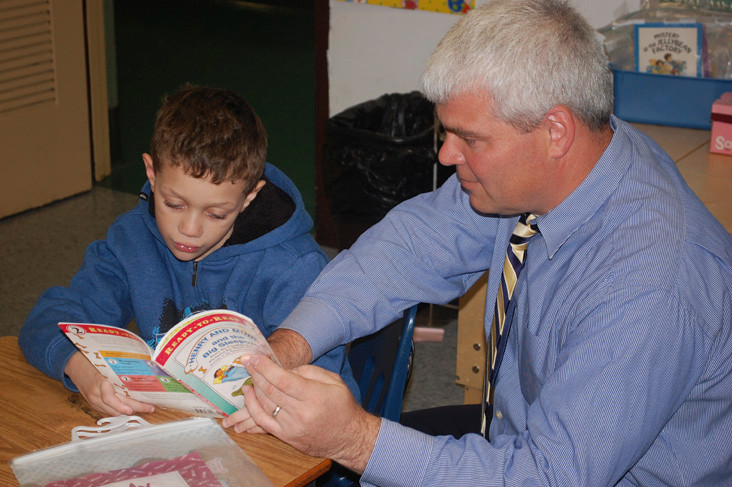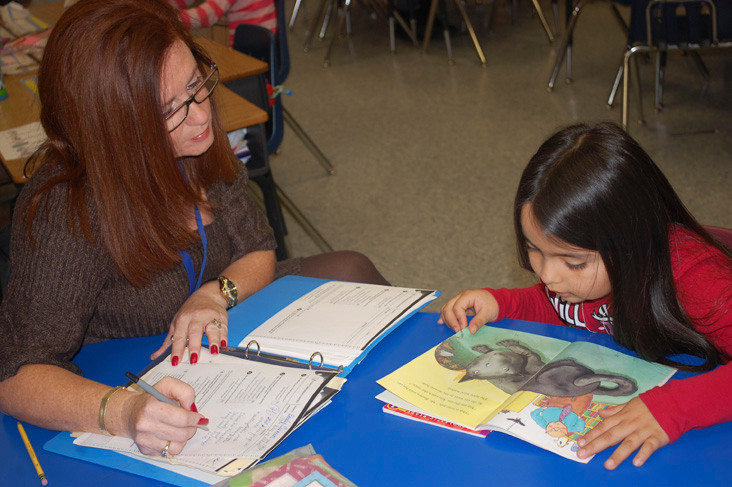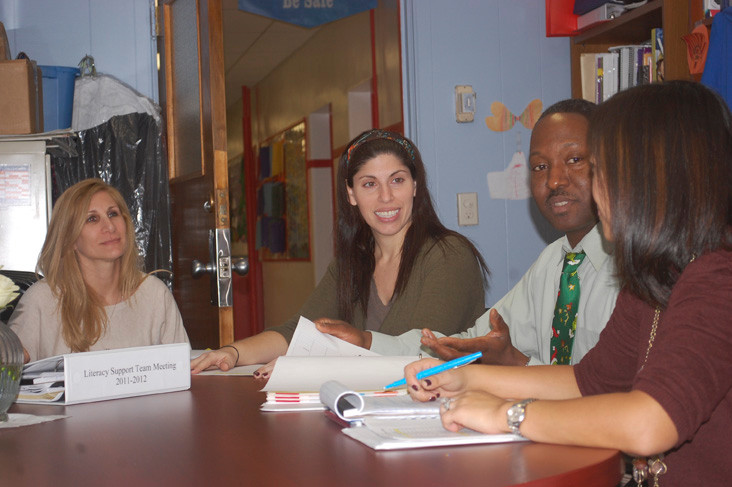District 30 keeps tabs on its readers
There’s a lot of talk going on about reading in District 30.
Literacy Zone meetings are now the norm at each of the three elementary schools, as teachers and administrators come together to help improve each child’s reading skills. And with more than 1,400 students in the district, that’s a lot of talk that’s going on. But it’s not just talk.
Two years ago, the district started “Red Zone” meetings to focus on students who were struggling with their reading skills. The child’s classroom teacher would be joined by an administrator, a reading teacher and any other teacher providing services to that student. Together, they would develop a plan to help each child do better.
But then, district officials decided that they should be talking about all students, not just those who needed some extra help. Some students were in the “gray area,” said Gerard Poole, the assistant to the superintendent for curriculum and instruction, meaning they were just reading on grade level. And, Poole said, officials didn’t want to forget about those students who were excelling, the one teachers want to boast about.
Teachers said that the former “Red Zone” meetings were done to address the bottom 15 percent of readers. Susan Perrone, a second-grade teacher at Shaw Avenue School, noted that when students fell behind with their reading skills in the early grades, it became harder to correct them in their later elementary years. “We couldn’t band-aid up there anymore,” she said.
Perrone said the “Red Zone” meetings led to improvements, but she is glad that it has been expanded to include discussion on all students. She also said that having the administrators, such as the principal, assistant principal or even Poole take part in the discussion, shows the commitment that there is in the district to helping students achieve. “That philosophy motivates teachers,” she said.
Fifth-grade teacher Pam Garvey said the Literacy Zone meetings lead to an individual educational plan for every child. She noted how every teacher connected to a child — ESL, reading, speech, special education, resource room — takes part in the meeting.

 50.0°,
Overcast
50.0°,
Overcast 









